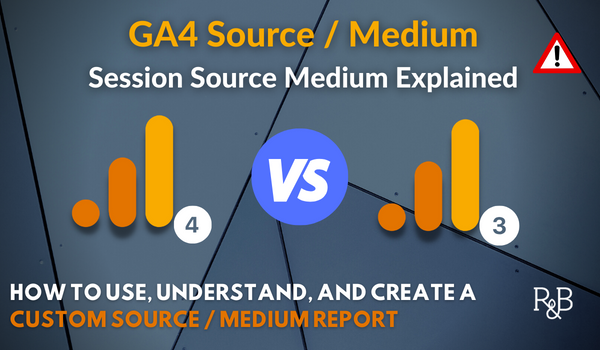Exploring the Concept of Secondary Dimensions in Google Analytics: Meaning and Critical Implementation
Revealing the Impact of Secondary Measurement in Google Analytics on Data Analysis and Insights
In the world of information analytics, the use of secondary dimensions within Google Analytics has actually arised as an essential device for removing much deeper understandings and unraveling facility patterns that may or else stay covered. By peeling off back the layers of main information collections, additional dimensions provide a nuanced viewpoint that enriches the understanding of user behavior, website efficiency, and the efficiency of advertising methods. The real influence and untapped potential of additional measurements are frequently taken too lightly, overshadowed by the appeal of key metrics. As we navigate via the elaborate landscape of information analysis, the value of additional measurements becomes progressively noticeable, clarifying critical information that hold the key to notified decision-making and critical optimizations.
Checking Out the Idea of Second Measurements
Additional measurements in Google Analytics provide additional insights by permitting customers to analyze key information combined with a secondary quality. This function allows a much more comprehensive understanding of the primary information by including one more layer of details for analysis. By including second dimensions, individuals can dive deeper into the information and discover useful relationships that could otherwise go unnoticed. For instance, by coupling the key information of site traffic with secondary measurements like demographics or habits, online marketers can gain an extra comprehensive sight of their audience and customize their techniques appropriately.
Comprehending the principle of secondary measurements is essential for optimizing the potential of Google Analytics. It enables customers to section data properly, determine patterns, and make educated choices based on an extra complete photo of their analytics information. By checking out the numerous second dimensions available in Google Analytics, individuals can open brand-new understandings and optimize their electronic advertising and marketing efforts. Basically, additional measurements work as a powerful tool for improving data evaluation and driving workable outcomes.
Enhancing Information Analysis With Secondary Dimensions
Having actually developed the fundamental understanding of second measurements in Google Analytics and their crucial role in information evaluation, the focus now changes towards leveraging these secondary credit to improve the analysis of analytics information (what is a secondary dimension in google analytics). By including second dimensions into information analysis, analysts can acquire deeper understandings into user habits, internet site performance, and marketing efficiency

Additionally, secondary dimensions aid in contextualizing primary information metrics by offering added layers of info. This contextualization help in recognizing the 'why' behind the data trends, aiding analysts make informed choices and optimizations to boost general performance. Ultimately, including additional dimensions improves the data analysis procedure, leading to even more purposeful understandings and strategic activities.
Discovering Hidden Insights Through Additional Dimensions
Checking out the depths of analytics information with secondary dimensions discloses useful understandings that would or else remain covered. By incorporating second dimensions in Google Analytics, organizations can unearth surprise patterns, patterns, and correlations that give a more detailed understanding of user actions and site efficiency. These additional layers of you can look here data allow experts to dig much deeper into the key dimensions, such as web traffic sources or touchdown web pages, and get a more nuanced point of view on just how different variables connect with each other.
Through the usage of additional dimensions, experts can segment and contrast data across various measurements, enabling them to determine details factors that influence customer engagement, conversion rates, and general success metrics. For instance, by pairing the primary dimension of 'gadget group' with the second measurement of 'age,' online marketers can identify which Recommended Site age demographics favor accessing the internet site via mobile phones versus desktop computers. This level of granularity empowers services to make data-driven choices and enhance their approaches for much better outcomes. Inevitably, discovering hidden insights with secondary measurements enhances the depth and precision of data analysis, leading to even more informed decision-making and improved performance results.
Leveraging Second Dimensions for Actionable Analytics
Structure upon the insights introduced through second dimensions in Google Analytics, businesses can currently harness this enriched data landscape to drive workable analytics and tactical decision-making. By leveraging second dimensions, companies can delve much deeper right into their data to remove important patterns, fads, and correlations that might have previously gone undetected. This deeper level of evaluation allows businesses to get a much more comprehensive understanding of user behavior, project efficiency, and general website performance.
One key advantage of making use of additional measurements for actionable analytics is the capacity to segment information based on specific standards. This segmentation allows organizations to tailor their techniques and campaigns to various target market groups, bring about a lot more targeted and effective advertising efforts - what is a secondary dimension in google analytics. Additionally, second measurements provide a more alternative view of individual communications, allowing services to enhance their web site web content, design, and overall customer experience
Maximizing Decision-Making With Additional Measurements
To boost tactical decision-making in analytics, leveraging additional dimensions in Google Analytics can offer a more nuanced viewpoint on customer actions and project efficiency. By including second measurements right into information evaluation, organizations can dive much deeper into the specifics of their web site visitors' interactions and interaction patterns. This additional layer of information allows pop over here for a more thorough understanding of how various variables, such as demographics, tools, or web traffic sources, effect vital efficiency indicators.

Final Thought
Finally, the use of additional dimensions in Google Analytics plays a vital role in improving information evaluation and discovering covert insights. By exploring this concept, one can get a deeper understanding of customer actions and make educated choices based upon actionable analytics. Leveraging secondary measurements enables a more comprehensive analysis of data and makes the most of the performance of decision-making processes.
